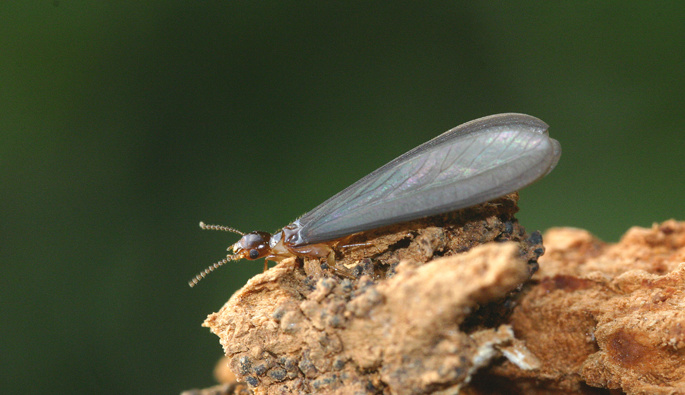As I was cutting firewood for the 2024 winter, I came across some brilliant tunnels in the timber and larger branches.
Drywood Termites.
The adults are ready to fly out, mate and make a new home in decaying wood; their wings are gorgeous, slate grey and rather delicate.
You’ll find them attracted to lights, landing on the windows in the evening or near the front door.
Termites are rather ancient insects. Fossils of termite-like beasts date back some 50 million years, and it looks as if their diet has more or less remained the same during that period of time: wood and cellulose materials. This could give the impression that termites are boring insects, and yes, that is exactly what they are.
No matter how you look at it, boring is the only way to start or accelerate decay in wood, opening up trunks or branches allows entry of fungi and moulds. Our native termites are fond of rotting wood, and as such play an important role in the recycling of woody materials. Ashes to ashes, dust to dust, and forest fibres to faecal frass.
 Kalotermes brouni larva in dead wood. Photo / Supplied
Kalotermes brouni larva in dead wood. Photo / Supplied
Only very recently in the geological history of Kalotermes brouni (our so-called dry-wood termite), humans came on the scene and obligingly built these enormous structures from large quantities of dead, milled wood, known as "houses". Especially in the good old days these houses were made from untreated local timbers.
Lots of myths around our three species of Native Termites but the most important one is that the dry-wood termite really prefers wet timber and untreated timber. I remember in my old house in West Auckland, the bedroom was built from untreated timber; the gutter was leaking; the water soaked the weatherboards and studs, and the termites chewed their tunnels right to the paint-layer!
Spectacular and clever way to control relative humidity in their wooden home!
Prevention of native termite invasion is obvious: Use treated timber and keep it dry.
We do have some invasive termites from Australia. Coptotermes acinaciformis and Coptotermes frenchi are quite a different kettle of fish. They do not require dead or wet wood and will happily excavate in living trees. In the Canberra region, where they are the most economically important termite species, colonies are often found associated with Eucalyptus trees from where they can invade houses.
In contrast with our native termites, these Aussie chisel-beaks are basically a subterranean species. Nests are commonly hidden in amongst the root systems of a living tree and are therefore not easy to detect. But when they shift to another location, or extend their feeding grounds, these termites construct characteristic runways from mud. These earthen tubes usually originate from the soil and enable them to maintain their required humidity.
If you find termites with mud “runways” please contact MPI – 0800 809 966. We don’t want those around!!
LISTEN ABOVE
Take your Radio, Podcasts and Music with you










